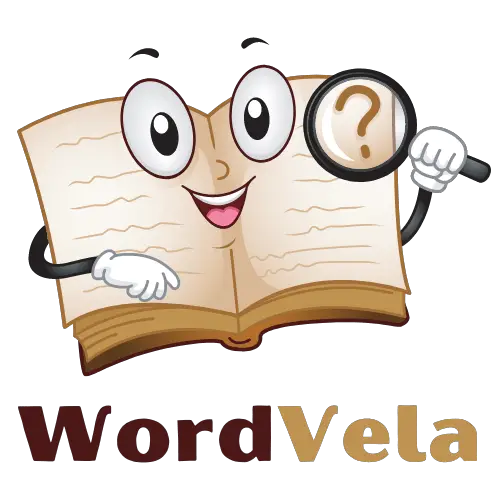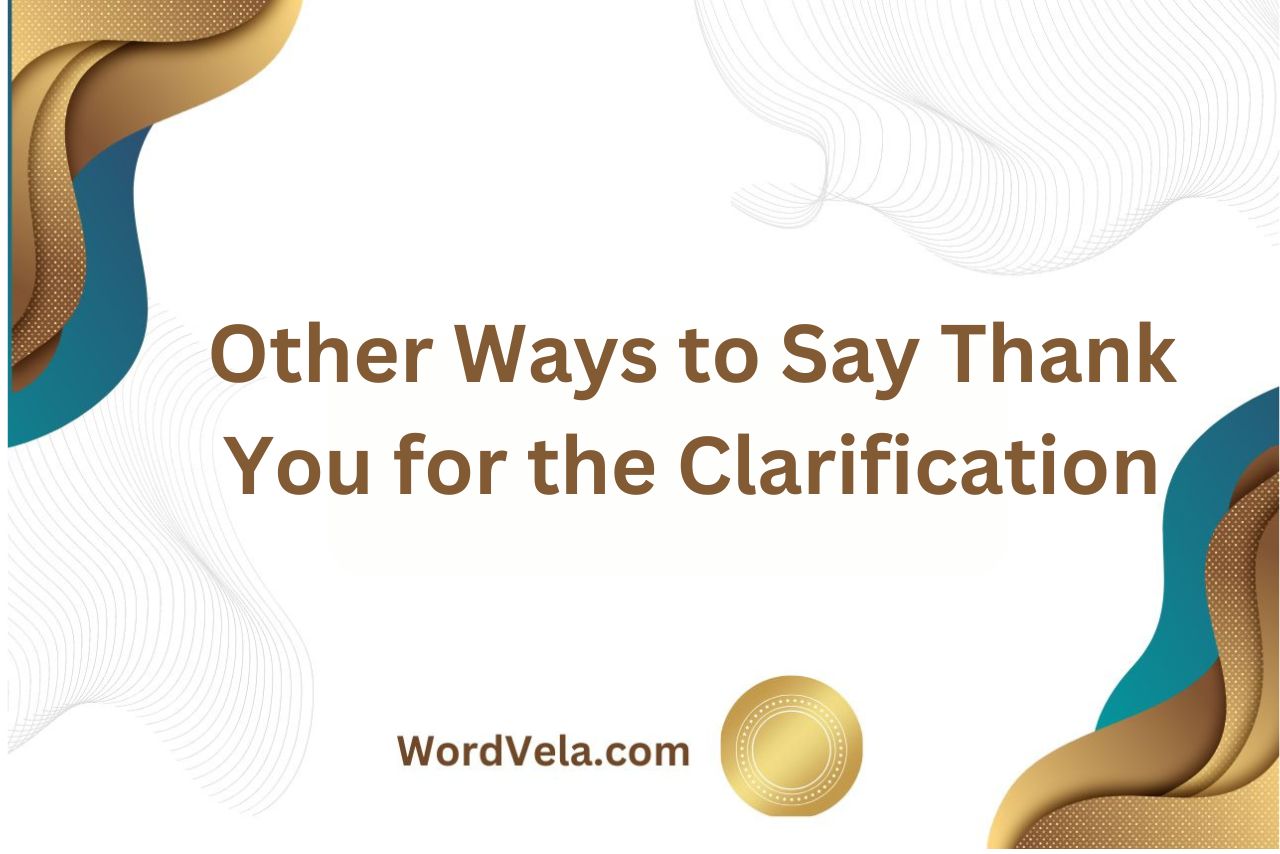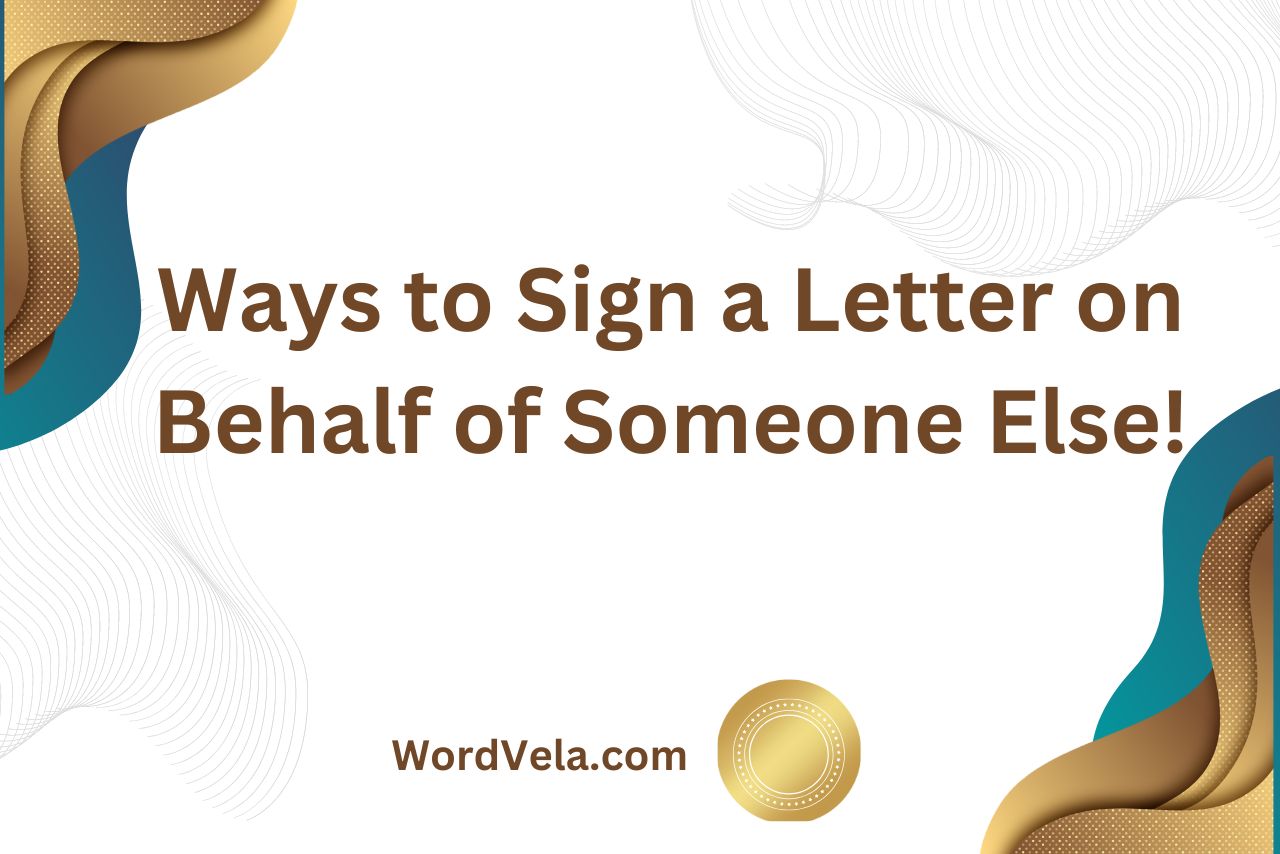Other Ways to Say Thank You for the Clarification: When it comes to expressing gratitude for someone’s clarity, there are various phrases that can convey your appreciation in different contexts.
Saying “Thanks for clearing that up” or “I appreciate you explaining this” are just a couple of the many ways you can show your thanks when someone provides you with clarification.
Table of Contents
Other Ways to Say Thank You for The Clarification:
Absolutely! Here are 12 ways to express gratitude for someone clearing things up.
Thanks for The Clarification Meaning:
“Thanks for the clarification” means that you are grateful to someone for explaining something more clearly. It shows appreciation for their effort in helping you understand something you might have been confused about.
Here’s a breakdown of the phrase:
- Thanks: expresses gratitude
- for: indicates the reason for your thanks
- the clarification: refers to the act of making something clearer
Is It Correct to Say Thank You for Your Understanding?
Yes, “Thank you for your understanding” is absolutely correct. It’s a common and polite way to express gratitude in various situations.
Here’s why it works:
- Conveyance of Thanks: It clearly shows appreciation for someone’s compassion, patience, or acceptance.
- Professional Tone: It maintains a professional and courteous tone in emails or formal settings.
Thanks for The Clarification Email:
The primary use of a “Thanks for the clarification” email is to express gratitude to someone for explaining something more clearly. It’s used in situations where you previously had some confusion and their explanation helped you understand better.
Here are some common uses of “Thanks for the clarification” emails:
How Do You Say Thank You for Knowledge Sharing?
There are many ways to express your gratitude for someone sharing their knowledge! Here are some options depending on the context and level of formality:
Formal:
Informal:
How Do You Say Thank You in The Most Humble Way?
| Level of Formality | Phrases | Highlights |
|---|---|---|
| Formal | I am truly grateful for your assistance. Your generosity and support are humbling. Thank you. I am indebted to you for your guidance. | Expresses deep appreciation. Acknowledges the giver’s act of kindness. Shows that you recognize their help as something more than what you deserve. |
| Informal | I can’t thank you enough, you’re a lifesaver! Words can’t express how much I appreciate your help. You’re amazing, thank you for everything! | Emphasizes the impact of their help. Shows that you feel your thanks are inadequate. Highlights their positive qualities as a way of expressing gratitude. |
| General | Thank you from the bottom of my heart. I am so grateful for what you have done. I am lucky to have you in my life. | Expresses deep and sincere emotion. Focuses on the value of their action. Shows appreciation for the relationship. |
| Humble Actions | Offer to return the favor in some way. Acknowledge your own shortcomings that necessitated their help. Focus on what you learned from their assistance. | Shows willingness to reciprocate kindness. Avoids taking credit or making it about yourself. Demonstrates personal growth due to their help. |
Utilizing Non-Verbal Communication:
Non-verbal communication can be just as powerful as verbal expressions.
Here are some ways to say thank you without saying a word:
When it comes to non-verbal communication, subtle cues can make a big impact. Remember that your body language can speak volumes about how thankful you are for someone’s clarification.
| Non-Verbal Cue | Interpretation |
|---|---|
| Smile | Appreciation and friendliness |
| Eye Contact | Respect and acknowledgment |
| Hand Gestures | Engagement and connection |
Incorporating Acts of Kindness:
Conclusion and Final Thoughts!
Expressing gratitude for someone’s clarification is crucial in effective communication.
By utilizing various phrases to convey thanks, you not only show appreciation but also encourage further engagement and collaboration.
Remember, a simple “thank you” can go a long way in fostering positive relationships both personally and professionally. So, whether it’s through saying “I understand now” or “Your explanation was helpful,” acknowledging the effort put into providing clarity is always worth it.
Strengthen your interactions by incorporating these alternative ways to say thank you into your daily conversations and witness the positive impact they create on your connections with others.
Latest Posts!
- 9 Proper Ways to Sign a Letter on Behalf of Someone Else!
- Do You Put a Comma After Yesterday? Here Defined:
- 12 Professional Ways to Say I Will Keep You Posted!
- 10 Other Ways to Say Well Received in An Email!
- 12 Other Ways to Say Thank You for Your Attention!
- Secretary’s or Secretaries’ or Secretaries? Which Is Correct?











Leave a Reply